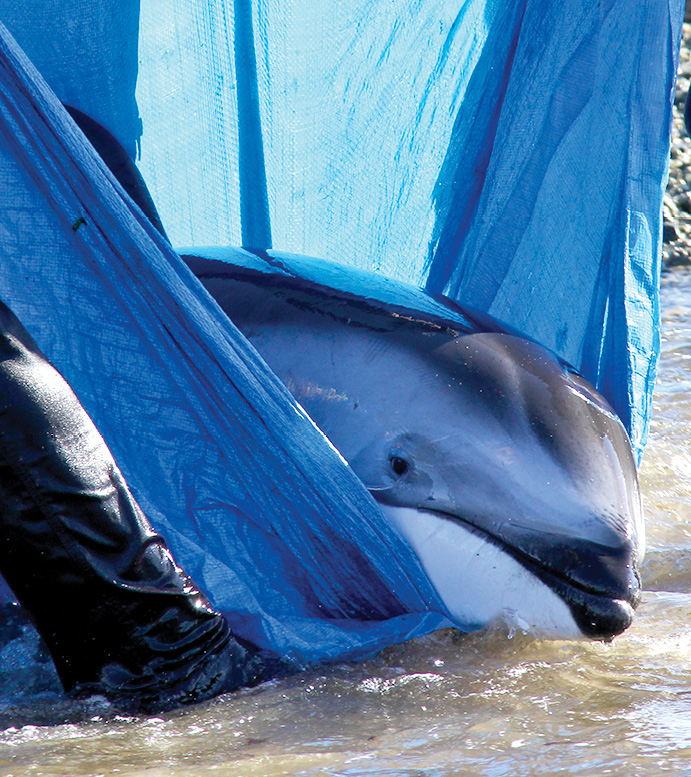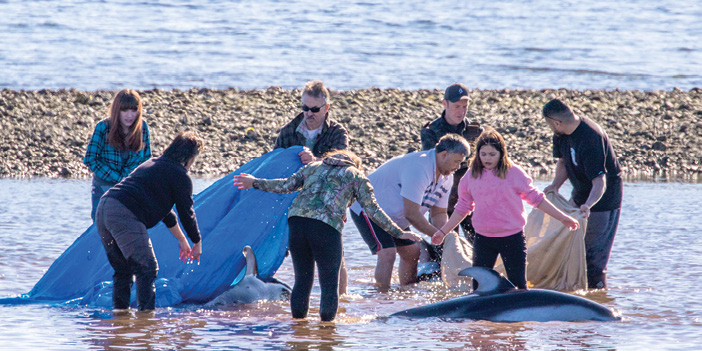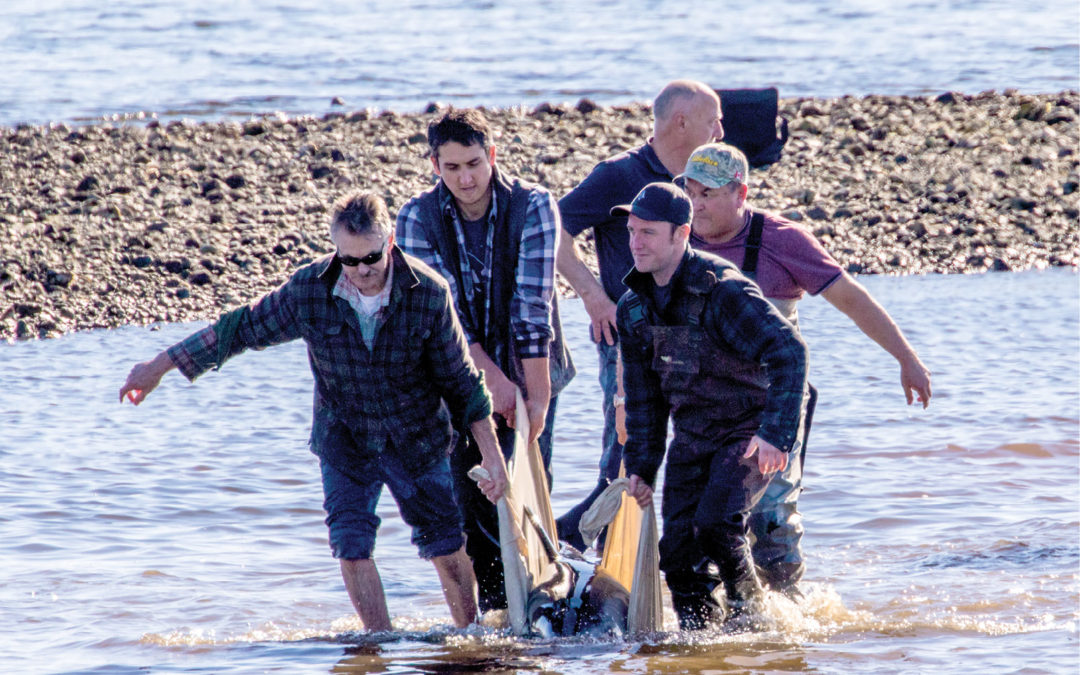An amazing effort by the Tla’amin First Nations an other onlookers to help out 16 Pacific White-sided Dolphins trapped, and then stranded, in a centuries-old rock fish trap built to trap herring and other fish. (Photo courtesy of Michelle Pennell.)
BY SUSAN MACKAY
One hundred Pacific White Sided Dolphins were first spotted in front of the Westview viewpoint when Transient Bigg’s Orca of the T090 family dispersed them in the afternoon of Monday, March 16. They followed the smaller group up to Tla’amin, forcing them ever closer to shore.
The dolphins took refuge behind the berm of an old Tla’amin fish trap in shallower water than the Orca could get to. The Orca watched and waited patiently for any of the dolphins to make a run for it.
The dolphins in the fish trap ran out of time and became trapped with the quickly falling tide. Emotions run high seeing animals in distress. People ventured into the frigid waters to help these dolphins out of their predicament.
Tla’amin salmon hatchery manager Lee George was one of the first to realize the animals were trapped. He managed to get waders on and gather tarps and blankets to continue with the rescues. He commented that he had never seen anything like this. The rescues were definitely a team effort by about 20 people doing what they could.
Everyone felt exhilarated after the last of the dolphins were successfully carried out of the trap in the tarps and blankets and released into deeper water.
For the most part, the dolphins seemed to readily accept the human intervention. Once in deeper water, someone stayed with them for a bit so that they wouldn’t turn and re-strand. This also allowed them to realize that the Orca had departed.
The dolphins regrouped and headed off slowly in the other direction.

Photo courtesy of Susan Mackay 
Photo courtesy of Michelle Pennell
Pacific White Sided Dolphins have only returned to our inside waters between Vancouver Island and the mainland in any significant numbers since 1995. They had previously been considered a pelagic (open ocean) species. Usually they travel in numbers ranging between 15 to 100 but there can be as many as 3,000 or more grouped together. They are intelligent, gregarious and can be truly acrobatic with huge leaps and complete flips out of the water. In front of Powell River we have seen numbers of approximately 1,000 in a spectacular herd a couple of years ago.
Another member of the Dolphin family are Orca, or Killer Whales; so named because they were thought to kill all species of fish and marine mammals. In our BC waters we have three distinct species of Orca: Resident, fish eaters (herring, salmon, halibut); Transient Bigg’s, meat eaters (seals, sea lions, other marine mammals, birds); Offshore, rarely in our inside waters, they have been seen eating both fish and mammals.
The Orca we see most frequently in front of Powell River are the Transient Bigg’s Orca, who prey on seals, sea lions, and other marine mammals. They are very good hunters. Adaptive in their hunting skills, they sneak up on fast moving prey, such as Dolphins or Dall’s Porpoise.
Wild Ocean Whale Society (WOWs) presentations and workshops dealing with marine mammal response, cancelled due to the COVID-19 outbreak, will be rescheduled as soon as possible. Anyone wishing to participate and be a part of our team, please drop a note to our rescue@wows.org email. We will send out notification of rescheduled dates, once determined.
We held a training session with DFO on whale refloatation Feb. 15th at Willingdon Beach.
Information learned from this training session was to be in the scheduled workshop.







